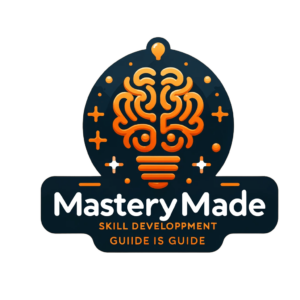In the constantly evolving landscape of the modern workplace, we find ourselves at the heart of transformational changes defining this year’s job market. Our mission is to deliver insights into the 2023 job market trends, an endeavor that could mean the difference between stagnation and growth in your professional journey. With careful job market analysis and a keen understanding of the latest in employment trends, we’re here to chart a course through the dynamic 2023 job outlook.
Observing and interpreting the currents of change play a critical role in seizing opportunities in a competitive environment. We’ll begin our voyage by highlighting the substantial shifts and disruptions molding the job market this year. Rest assured, whether you’re a seasoned professional or entering the fray for the first time, our guidance will empower you to capitalize on emerging opportunities and navigate your career path with confidence.
Key Takeaways
- Understanding emerging job market trends is essential for career growth and resilience.
- 2023 job outlook forecasts highlight the need for adaptability in an ever-shifting employment landscape.
- Staying informed through job market analysis supports strategic career decisions and opportunity identification.
- Major industry disruptions and the rise of new sectors offer unique challenges and openings for professionals.
- Personal development and skill acquisition are pivotal in aligning with the future of work.
Understanding Current Employment Trends
As we embark on dissecting the current employment trends, it’s crucial to recognize the dynamic nature of today’s job landscape. The year 2023 has ushered in a myriad of changes, with some industries skyrocketing in demand for talent while others recalibrate in response to technological advancements and shifting consumer behaviors. We’re here to sift through the data and reports from leading labor market specialists to ensure you are well-versed in the job market forecast and acknowledge the evolving hiring trends.
Understanding the sectors pulsating with growth is essential for anyone looking to navigate the job market effectively. Industries such as renewable energy, technology, and healthcare continue to surge, seeking skilled professionals to lead innovation and cater to an increasingly digital and health-conscious populace. Conversely, employment opportunities in traditional sectors like retail and manufacturing are witnessing a slowdown as automation and online commerce transform their operational landscapes.
“To remain competitive in the job market, applicants must adapt to new market realities and align their skill sets with the industries leading the charge in growth and innovation.”
Let’s consider the following insights from the labor market which underline the shift in demand for various job roles:
- Renewable Energy – Increase in roles related to solar power management, wind energy engineering, and sustainability strategy.
- Technology – Surge in demand for cybersecurity experts, data scientists, and AI specialists.
- Healthcare – Expanding need for telehealth technicians, health data analysts, and specialized nurses.
It is these insights that help draw a comprehensive map of where the job market is headed and what industries are aiming for a major upswing in hiring. To aid your understanding further, let’s take a more detailed look through a comparative table:
| Industry Sector | Growth Trend | Demand for Job Roles |
|---|---|---|
| Renewable Energy | Rising | Engineers, Technicians, Sustainability Managers |
| Technology | Rising | Data Scientists, AI Developers, Cybersecurity Analysts |
| Healthcare | Stable to rising | Nurses, Telemedicine Coordinators, Health Informaticians |
| Retail | Declining | E-commerce Managers, Supply Chain Analysts |
| Manufacturing | Declining | Automation Technicians, Process Improvement Specialists |
Economic factors undoubtedly guide the creation and extinction of job roles. In the face of evolving employment challenges and opportunities, what becomes clear is the power of adaptability and the significance of upskilling. For those in declining sectors, pivoting to industries that aprize your transferable skills could spell the differentiation between career stagnation and growth.
Our journey through the intricacies of current employment trends is intended to empower you to make strategic career choices bolstered by a nuanced understanding of the job market forecast and hiring trends. Armed with this knowledge, the path forward is one of confidence and preparedness for the year’s employment landscape ahead.
The Impact of Technology on Labor Market Trends
As we stride deeper into 2023, it’s clear that technology’s footprint in the job market is here to stay, reshaping labor market trends and forging new paths for job opportunities. We’re witnessing a substantial shift as remote work, automation, and AI redefine the traditional workplace and introduce a new set of must-have skills for aspiring professionals.

The Rise of Remote Work and its Long-Term Implications
Remote work, once seen as a perk, has now become a staple for many industries. The technology impact on jobs has enabled a geographically dispersed workforce to collaborate and contribute without the boundaries of physical office spaces. This broad adoption suggests remote work’s potential to stay post-pandemic, influencing everything from recruiting practices to urban planning. For job seekers, adapting means not only honing digital communication skills but also learning to manage remote teams effectively, prioritizing a healthy work-life balance even when the office is just a few steps away.
Automation and AI: Threat or Opportunity for Job Seekers?
The interjection of automation and AI in the job market prompts a critical analysis of the labor landscape. While some roles may become obsolete, others will morph, and brand-new ones will appear. Particularly, jobs emphasizing creativity, strategy, and human empathy are less likely to be replaced and more likely to work in tandem with technology. We encourage job seekers to view these developments as a gateway to innovation. By upskilling strategically, they can embrace AI and automation as tools of empowerment rather than harbingers of displacement.
Digital Literacy: A Must-Have Skill in 2023
Digital literacy has ascended from a mere advantage to a cornerstone of the 2023 job growth forecast. In a marketplace where technology permeates every facet of work, from data analysis to customer engagement, professionals with strong digital skills are in enhanced demand. Our advice to those seeking to thrive in this evolving job climate is to invest in learning platforms and resources that bolster digital proficiencies. Acquiring skills such as coding, data analysis, or digital marketing can set you apart and open doors to a multitude of job opportunities.
Job Market Trends: Navigating Industry Shifts
As we continue to witness transformative industry shifts, staying attuned to job market trends is more crucial than ever. Our examination of these trends provides a roadmap for those seeking to uncover the most dynamic employment opportunities. Let’s delve into the sectors that are poised for growth and those that may face challenges.
One of the keys to success in this ever-evolving landscape is understanding which industries are expanding. Healthcare, technology, and renewable energy consistently show signs of robust growth, with new job roles emerging at the intersection of these fields. As the world pivots towards sustainability and digital transformation, these sectors stand as beacons of opportunity.
Conversely, industries such as fossil fuels and traditional manufacturing are grappling with an inevitable contraction. Automation and globalization have dramatically reshaped these landscapes, leading to a metamorphosis of job roles rather than their outright disappearance. Herein lies a hidden trove of employment opportunities for those who can pivot and upskill accordingly.
- Healthcare – Expanding roles in telemedicine and health informatics.
- Technology – Growth in cybersecurity, data analysis, and AI development.
- Renewable Energy – Opportunities in solar panel installation and wind turbine technology.
- Manufacturing – Shift towards advanced manufacturing roles requiring digital skills.
In the tableau of modern employment, upskilling has become synonymous with adaptability. As job roles evolve, showcasing agility and a commitment to continual learning is vital. The demand for digital proficiency, for example, is no longer confined to the tech industry; it pervades every corner of the job market.
Let’s dissect the skills landscape further. The demand for soft skills, such as creative problem-solving, effective communication, and leadership, is growing in conjunction with technical abilities. Our recommendation? Cultivate a diverse skillset that is both industry-specific and broadly applicable.
“In every industry, the digital veneer is becoming thicker. It’s not enough to know the ropes; you must also know how they’re being digitally spun.”
In conclusion, aligning your career aspirations with these emerging trends is akin to setting sail with the prevailing winds. By foreseeing which industries are ripe for advancement and which skills will be in demand, you can chart a career course that is both resilient and rewarding.
Job Market Statistics: Interpreting Data for Career Advancement
As we analyze the complex landscape of the job market, we must leverage statistical data to power our decisions regarding career advancement. In deciphering this data, our focus turns to high-growth sectors and the opportunities they present. Furthermore, understanding the skills gap and the necessity for training in these areas becomes paramount. Let’s dive into the statistics that illuminate the path to professional growth and job market success.
Identifying High-Growth Sectors and Top Job Titles
It is essential to pinpoint which sectors are experiencing explosive growth. Industries such as technology, healthcare, and green energy are rapidly expanding, offering a plethora of job opportunities. Within these high-growth sectors, top job titles emerge, signifying where the high-demand roles are concentrated. Positions like Data Analysts, Renewable Energy Technicians, and Health Informatics Specialists top the list, paving the way for those seeking meaningful career trajectories.
Bridging the Skills Gap: Training for Tomorrow’s Jobs
The future job market poses unique challenges, notably the skills gap that a rapidly evolving workplace creates. To stay ahead, individuals must seek out training opportunities that align with where the job market is headed. Upskilling through both digital platforms and traditional educational institutions is not just beneficial—it’s essential. Whether it’s learning coding languages or understanding data privacy, equipping oneself with the right capabilities ensures a competitive edge.
Geographical Trends in Employment Opportunities
An often-overlooked aspect of career planning is the geographic dimension of job opportunities. Current trends show distinct job market climates in various US regions. For instance, tech hubs such as the San Francisco Bay Area continue to attract IT professionals, whereas the manufacturing and logistics sectors thrive in the Midwest. Understanding these geographical employment trends is crucial for those considering relocation or telecommuting as viable options for career progression.

We’ve compiled a comprehensive table detailing the connection between high-growth sectors, respective job titles, and the regions where they’re flourishing. This resource aims to provide clear insights into the future job market and assist you in plotting a strategic course for career advancement.
| High-Growth Sector | Top Job Titles | Geographical Hotspots |
|---|---|---|
| Technology | Software Developer, Cybersecurity Analyst | California, Washington, Texas |
| Healthcare | Registered Nurse, Biomedical Engineer | New York, Florida, Pennsylvania |
| Renewable Energy | Solar Panel Installer, Wind Turbine Technician | Texas, Iowa, California |
| Financial Services | Financial Analyst, Compliance Officer | New York, Illinois, North Carolina |
| Artificial Intelligence | Machine Learning Engineer, AI Research Scientist | Massachusetts, California, Washington DC |
By examining job market statistics and considering location-specific demand, we position ourselves to capitalize on the growing number of job opportunities by location and secure our place in the industries of tomorrow. The strategic move could be just a well-informed decision away.
Strategies for Job Growth Forecast Adaptation
As we examine the dynamics of the job market, it becomes evident that understanding the job growth forecast is not just about recognizing trends—it’s about actively adapting to them. Our career strategy must be as dynamic as the market itself. To succeed in a landscape where change is the only constant, we must be adept at adapting to the job market. Here are several strategies to stay ahead in the game.
- Anticipate Industry Movements: Keep a close watch on economic reports, market analysis, and industry news to anticipate changes in the job market. Stay informed about which sectors are predicted to grow and what skills will be in demand.
- Foster a Flexible Skill Set: Cross-training in various skills can make you adaptable to different roles within your industry or open doors to new sectors. Always be prepared to pivot.
- Invest in Continual Education: Embrace learning opportunities, whether they’re formal degrees, online courses, or workshops. Upskilling ensures your expertise keeps pace with evolving market demands.
- Focus on Soft Skills: While technical proficiencies are vital, soft skills like adaptability, communication, and problem-solving are universally sought by employers and can significantly enhance your employability.
- Network Strategically: Building a robust professional network can provide insights into where the job market is headed and uncover hidden opportunities.
While it’s impossible to predict every market fluctuation, developing a flexible career strategy positions us well to navigate through uncertainty. In the ever-changing landscape of employment, having a versatile set of skills and a willingness to continually learn can distinguish you from the competition and reveal new pathways to success.
To further clarify how to build resilience in your career planning, consider the following table, which compares various aspects of career adaptability:
| Career Aspect | Traditional Approach | Adaptive Strategy |
|---|---|---|
| Job security | Remaining with one employer long-term | Building a transferable skill portfolio to navigate between roles and industries |
| Professional Development | Taking sporadic training sessions | Committing to continuous learning and upskilling |
| Networking | Reliance on existing contacts | Proactively expanding your network and engaging with diverse professionals |
| Technical Skills | Specializing in one niche area | Aiming for a breadth of knowledge across multiple technological domains |
| Career Planning | Setting a rigid career path | Reviewing and adjusting career goals regularly to align with market trends |
Preparing for the future doesn’t just involve looking ahead – it’s about crafting a kaleidoscope of skills, experiences, and connections that can be reconfigured to meet whatever the job market has in store.
Conclusion
In the landscape of 2023’s job market, we find ourselves at a crucial junction where career adaptability and the importance of continuous learning are not merely beneficial but essential for professional growth. As we have navigated through the complexities of this year’s employment trends and market shifts, the enduring message has been clear: a static career path is a relic of the past. We’ve witnessed first-hand the significant transformations occurring across industries, making it evident that our ability to pivot and evolve with the market is paramount.
Embracing Adaptability and Continuous Learning
Embracing adaptability means recognizing the fluid nature of the job market and responding with agility. In this era, our professional success is increasingly determined by our readiness to acquire new skills and explore uncharted territories in the world of employment. The importance of continuous learning cannot be overstated; it is the engine that drives our capacity to remain relevant and competitive. By committing to this learning ethos, we not only future-proof our careers but also open doors to a suite of emerging job opportunities that await those willing to embrace change.
Crafting a Career Plan Aligned with Emerging Opportunities
As we look towards the future, crafting a career plan becomes an exercise in strategic foresight. Aligning our professional aspirations with the emergence of new job roles and sectors ensures that we are not left behind as the job market evolves. In these final thoughts, we urge our readers to envision themselves as architects of their career paths. Let the insights from the job market trends of 2023 be your blueprint to identifying and seizing emerging job opportunities. Forge ahead with resilience, an appetite for knowledge, and an adaptable career plan. Together, we can navigate this dynamic job market landscape and achieve the successes that lie on the horizon.
FAQ
How do current job market trends affect career growth?
Understanding the latest job market trends is crucial for career growth as it helps professionals stay informed about the demand for certain skills, which industries are hiring, and what job titles may be emerging or phasing out. It allows individuals to adapt and align their skill set to meet the needs of the evolving job market, thus improving their employability and potential for advancement.
What are the major shifts disrupting the hiring landscape in 2023?
In 2023, major shifts such as the increasing adoption of remote work, the impact of automation and artificial intelligence on jobs, and rapid technological advancements are disrupting the hiring landscape. These trends are influencing where and how people work, the types of jobs available, and the skills that employers prioritize.
Where can I find reliable job market forecasts and employment trend analyses?
Reliable job market forecasts and employment trend analyses can be found through a variety of sources including government labor reports like the Bureau of Labor Statistics, industry-specific research, economic think tanks, and credible news outlets that specialize in job market analysis. It’s important to use up-to-date and reputable sources for accurate information.
How has remote work changed the job market, and what does the future look like?
Remote work has become more widely accepted, leading to a decentralized workforce, changes in office culture, and new expectations for work-life balance. The future job market will likely include a blend of remote and in-person work, with businesses offering flexible working arrangements to attract and retain talent.
Is automation and AI a threat to jobs, or does it create new opportunities?
Automation and AI present both challenges and opportunities. While some jobs may be at risk due to technological advancements, new roles are being created that focus on managing, programming, and maintaining AI systems. Upskilling and staying informed can help job seekers turn this trend into an opportunity for career growth.
Why is digital literacy crucial in the 2023 job market?
Digital literacy is crucial because it encompasses the skills needed to effectively navigate the digital tools and platforms that are increasingly integral to most jobs. Having a strong foundation in digital literacy can enhance productivity, ability to communicate and collaborate, and adaptability to new technologies that are shaping the current job market.
What industry shifts are influencing job market trends and employment opportunities?
Industry shifts such as the growing emphasis on sustainability, the expansion of healthcare services, the evolution of the tech industry, and the changing landscape of retail and e-commerce are influencing job market trends. These shifts are creating new roles while restructuring or phasing out older ones, directly affecting the availability of employment opportunities.
How can I use job market statistics to advance in my career?
Job market statistics can guide your decisions by revealing the fastest-growing sectors, identifying in-demand job titles, and providing insights into salary benchmarks. By analyzing this data, you can strategically target sectors that offer growth potential and pursue training or development to fit these opportunities.
What strategies can help me adapt to the predicted job growth forecast?
To adapt to the job growth forecast, strategies such as continuous learning, staying updated with industry trends, networking, and remaining flexible with your career path are invaluable. They will enable you to anticipate market changes and position yourself where opportunities are likely to arise.
What are the benefits of career adaptability and continuous learning?
The benefits of career adaptability and continuous learning include staying competitive in the job market, being prepared for technological and industry changes, and maintaining employability. These qualities also prepare you for unexpected shifts in the job market, making you a more resilient professional.











